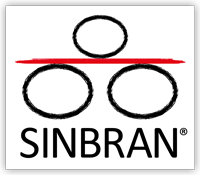Easy and gentle cleaning of SINBRAN® Filter Elements
A major advantage of SINBRAN® filter elements is their excellent cleanability.
The special design of SINBRAN® filter elements ensures that the ePTFE membrane laminated onto the sintered body reliably prevents the powdery product from penetrating into the depths of the element. The dust to be separated remains on the membrane surface, where it is removed from the back by a pulse of compressed air. The special lamination process produces a very smooth and homogeneous surface that enables almost complete dust cake removal.
The filter surface is free of folds, corners, recesses or dead angles where dust can accumulate that cannot be removed or can only be removed incompletely by the cleaning process.
If the product is changed or if the surface becomes sticky or crusty, it can be gently cleaned with water to restore the original filtration performance.
Wet cleaning is possible both during operation (CIP) and when the filter is removed.

